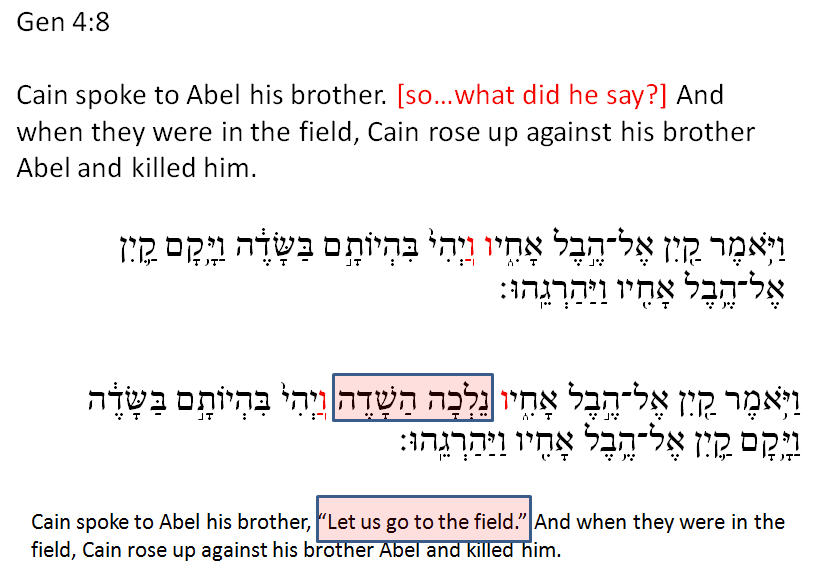If there are any out there who like Syriac, this is pretty cool. I’m actually not one of them. I actually suggested that it be removed from my graduate program in favor of Akkadian and more Ugaritic. The reason is that languages and literature pre-dating or contemporaneous to the biblical Hebrew text are just more valuable. Syriac is something useful for textual criticism, but (frankly) what you need to know there is in commentaries that closely engage the text. By way of example, the image below shows that, in Gen 4:8 the conversation between Cain and Abel has been accidentally omitted in the Masoretic Text (MT). The reason is simple. The scribe’s eye skipped from one waw to another (see the red Hebrew letters), thus omitting the two words that matter. The correct text is witnessed in the Septuagint and the Syriac. The Syriac testimony is of note since Syriac Bibles typically translate the traditional Masoretic text — but in this case, the Syriac base text preserves the correct reading — pointing to (cover your ears, KJV-only / MT-only people) the fact that there is more than one Masoretic manuscript tradition (and one that agrees with the “satanic” Septuagint base – anyone who has seen the Chick tract on Bible versions will get a chuckle out of that comment).
Incidentally, we’ll be looking at this sort of thing in my MEMRA course “How We Got the OT,” which starts Monday (actually, Tuesday, since Monday is Memorial Day).






It seems to me that Syriac might actually be more useful for studying early Christian literature.
yep